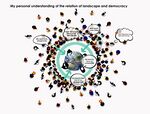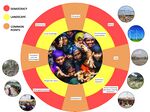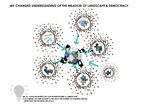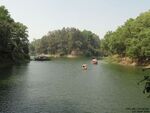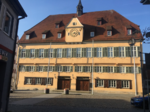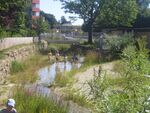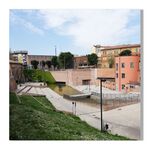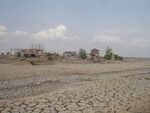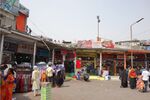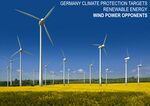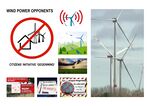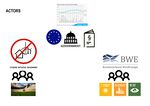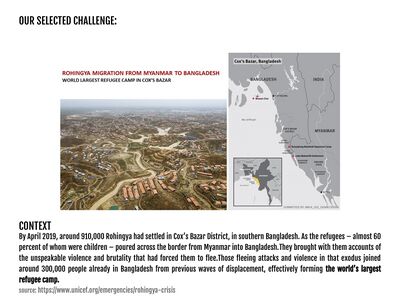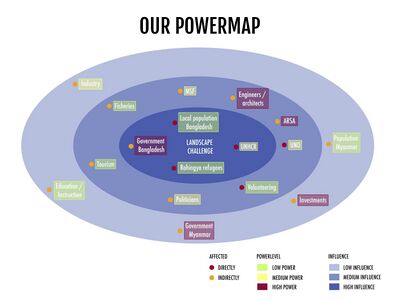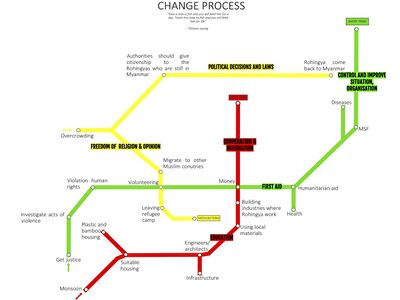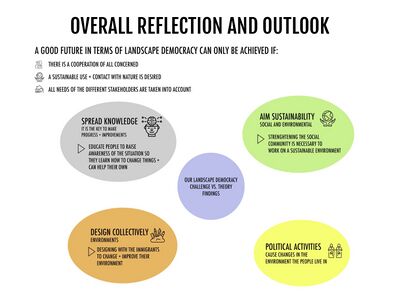LED Online Seminar 2019 - Working Group 9: Difference between revisions
| (129 intermediate revisions by 5 users not shown) | |||
| Line 17: | Line 17: | ||
<gallery caption=" " widths="150px" heights="150px" perrow="5"> | <gallery caption=" " widths="150px" heights="150px" perrow="5"> | ||
Image:Assignment 01, Md Zasim Uddin, Imla-2014362.jpeg| | Image:Assignment 01, Md Zasim Uddin, Imla-2014362.jpeg|Zasim Uddin's manifesto | ||
Image:Landscape Democracy Manifesto Personal Understanding.jpg|Raphaela's manifesto | Image:Landscape Democracy Manifesto Personal Understanding.jpg|Raphaela's manifesto | ||
Image:Manifesto .jpg|Michela's manifesto | Image:Manifesto .jpg|Michela's manifesto | ||
| Line 28: | Line 28: | ||
'''A: Landscape and Democracy''' | '''A: Landscape and Democracy''' | ||
Sieverts, Thomas (2003): Cities without cities. An interpretation of the Zwischenstadt. English language ed. London: Spon Press. (Michela Madiotto) | |||
'''B: Concepts of Participation''' | '''B: Concepts of Participation''' | ||
Gaventa, John: The Powerful, the Powerless, and the Experts (Raphaela Roming) | |||
Hester, Randolph (2005): Whose Politics, Landscape Architecture (Michela Madiotto) | |||
'''C: Community and Identity''' | '''C: Community and Identity''' | ||
Francis, Mark: A Case Study Method for Landscape Architecture (Raphaela Roming) | |||
Welk Von Mossner, Alexa (2014): Cinematic Landscapes, In: Topos, No. 88, 2014.(Zasim Uddin Tuhin) | |||
Gafford, Farrah D. (2013): It Was a Real Village: Community Identity Formation Among Black Middle-Class Residents in Pontchartrain Park, Journal of Urban History 39:36 | |||
'''D: Designing''' (Majeda Khatun) | |||
Salgado, Mariana, et al. (2015): Designing with Immigrants (Raphaela Roming) | |||
Hester, Randolph: Life, Liberty and the Pursuit of Sustainable Happiness (Michela Madiotto) | |||
Pritzker Prize winning architect Alejandro Aravena on sustainable design and community involvement in Chile (Zasim Uddin Tuhin) | |||
Woodcraft, Saffron, et al.: Design for Social Sustainability: A Framework for Creating Thriving New Communities (Majeda) | |||
'''E: Communicating a Vision''' | '''E: Communicating a Vision''' | ||
Boer, Florian, Jens Jorritsma, and Dirk van Peijpe. 2010. De Urbanisten and the wondrous water square. Rotterdam: 010 Publishers. Webpage and Video (Zasim Uddin Tuhin) | |||
A toolkit for transforming abandoned spaces through the arts (Majeda Khatun) | |||
=== Steps 3 and 4: Concepts Selection and definition === | === Steps 3 and 4: Concepts Selection and definition === | ||
| Line 49: | Line 70: | ||
'''Concepts and definitions''' | '''Concepts and definitions''' | ||
'''Author 1: . | '''Author 1: Zasim Uddin Tuhin''' | ||
*..... | |||
*..... | '''Welk Von Mossner, Alexa (2014): Cinematic Landscapes, In: Topos, No. 88, 2014.''' | ||
*....... | |||
*Fictional film is a film that tells a fictional or fictionalized story, event or narrative. In this style of film, believable narratives and characters help to convince the audience that the unfolding fiction is real. Lighting and camera movement, among other cinematic elements, have become increasingly important in these films. Great detail goes into the screenplays of narratives, as these films rarely deviate from the predetermined behaviors and lines of the classical style of screenplay writing to maintain a sense of realism. Actors must deliver dialogue and action in a believable way, so as to persuade the audience that the film is real life. | |||
*Landscape is the dominant metaphor in fiction film because it provides a means to explore the intersection between narration and geography. While a useful and appropriate device to engage landscape, the metaphor also works to constrain the discourse surrounding cinematic landscapes. | |||
'''Pritzker Prize winning architect Alejandro Aravena on sustainable design and community involvement in Chile''' | |||
*When asked to build housing for 100 families in Chile ten years ago, Alejandro Aravena looked to an unusual inspiration: the wisdom of favelas and slums. Rather than building a large building with small units, he built flexible half-homes that each family could expand on. It was a complex problem, but with a simple solution — one that he arrived at by working with the families themselves. With a chalkboard and beautiful images of his designs, Aravena walks us through three projects where clever rethinking led to beautiful design with great benefit. | |||
*Sustainability is nothing more than the rigorous use of common sense. We must change our way of thinking and realize that we cannot continue to consume land without looking to the future. | |||
'''Boer, Florian, Jens Jorritsma, and Dirk van Peijpe. 2010. De Urbanisten and the wondrous water square. Rotterdam''' | |||
*The Rotterdam North sub-municipality will be the first to transform a 'stony' plaza into an attractive city plaza that offers space for water, sports and greenery. The concept of 'water plaza' is a Rotterdam innovation in order to keep dry feet in a densely populated area during heavy rains and to make the city more attractive at the same time. These objectives will contribute to the ambitions of the Rotterdam Climate Initiative. | |||
'''Author 2: Raphaela Roming''' | |||
*Francis, Mark: A Case Study Method for Landscape Architecture: An important, but at the moment often underrated tool for developing our profession of landscape architecture is the case study methodology. It can be used in various different areas: teaching, research, practice, theory building, criticism & communication and outreach. In an exemplary case study for landscape architecture the LAF invented a methodology on which these studies in our profession can be developed. In this study it becomes clear that the redesign of a problematic public open space itself is not the solution to solve them.In the beginning there has to be a careful analysis in the users behaviour, social and economical situations - People have to get involved to it. | |||
*Salgado, Mariana, et al. (2015): Designing with Immigrants - Means a lot of emotional involvement. Whatever method we want to use in a participation project with immigrants we have to focus on the relationship level. „Working with people from different cultural backgrounds is not straightforward and the atmosphere created influences results, perhaps even more than the techniques themselves. (…) Design researchers have to look on other fields to learn how to deal with and report on emotions“ But if we keep this in mind and focus on trust, empathy and relationships we can get enriching design visions. | |||
*Gaventa, John: The Powerful, the Powerless, and the Experts: In a information society knowlege is a capital which is reserved to a closed club of experts though. As various studies have shown in the past knowledge is related to money and in that sense to power. Knowledge is rarely produced for poor or the powerless. There are developments and participation projects that want to improve the access and the generation of knowledge in the future. There need to be changes in this field and everybody should have access to knowledge and therefore there are current approaches to involve the powerless to it. This happens through participatory research, research withand by the people where they actually work out their own knowledge to be not reliant on so called experts anymore. | |||
'''Author 3: Michela Madiotto''' | |||
*Hester, Randolph: Life, Liberty and the Pursuit of Sustainable Happiness-Our affluence has empowered us to consume nonrenewable resources at alarming rates. We have seemingly gained freedom from environmental constraints through technology, standardization and specialization. We no longer experience ecological dependence or community connections in our daily lives. Our disassociation from the world around us offers us enormous short-term freedom. We talk about anomia. Anomie in this case refers to the state of confusion individuals and society feel about how to act toward their community and landscape. Our most realistic goal is to pursue sustainability with enough substantive and holistic insight that our pursuit can be sustained. Pursuing sustainability will require us to reformulate our premises about the best possible life we can achieve. To effect this transformation, the form of the city must enable us to act where we are now debilitated. This metamorphosis must be guided by three distinctive traits: enabling form, resilient form and impelling form. | |||
*Hester, Randolph (2005): Whose Politics, Landscape Architecture-No landscape architectural design is ever implemented without political activity. Every act of city making, landscape architecture and environmental planning is a direct act to achieve some political end and to support power and authority. The test describes five types of designer postures that illustrate political stances. The Blissfully Naïve do not see the connectedness of systems beyond their landscape architecture. For The Blissfully Naïve the design of the landscape really be separated from the decision about its location. They are so focused on the form making of objects that they are blind to the impacts of their actions. Second are the Savvy Naïve who are more aware of connectedness. They understand the political implications of their design work but claim ignorance. They are active accomplices to political power but they say they are “just designers”. The third type is the Servant. Servant understand and often support the normative political agendas of their clients. The power of these clients is attractive because it enables the designer's art, most of which is rather mundane The Servant role can be particularly profitable for the business-oriented landscape architect. The fourth type is the contextualist. Contextualist will try to address broader social issues within the bounds of polite politics. Catalysts, the fifth type, are landscape architectural agents of change, the group usually considered activist designers. Consider four focuses of catalyst designers: environmental justice, deep democracy, cultural and biological diversity and radical sustainability. | |||
*Sieverts, Thomas (2003): Cities without cities. An interpretation of the Zwischenstadt. English language ed. London: Spon Press.-One of the central lines of analysis to accompany the reading of Thomas Sieverts Cities without cities is represented by the correlation between diffusion and fragmentation of settlements and the processes of globalisation. Although the irrefutability of this statement probably warrants some ulterior element of evaluation, the fact remains that actually we are witnessing a proliferation of studies and research on the post-Keynesian landscape of the city that from diverse points of view, are inclined to highlight the relation that exists between the transformations which occur at a regional level and the process of capitalist accretion. A relation taking place in a context of immense elasticity and mobility of capital, a relation that characterizes the process of globalisation of markets, finance, production and employment. Nevertheless, if the relevant fact actually seems to be that of a growing interest on the part of territorial disciplines, of geography and sociology on the themes of diffused settlements and of social fragmentation that are related, they cannot not be considered like they have been for a long time, marginalized or misunderstood by the urban planning culture, in particular the European one. | |||
'''Author 4: Majeda Khatun''' | |||
*Woodcraft, Saffron, et al.: Design for Social Sustainability: A Framework for Creating Thriving New Communities: ‘Where are the PEOPLE?’ social sustainability can be defined as a ‘connectivity’ between people with its different human parameters. It is different from environmental sustainability. Social sustainability has many folds. Along with the infrastructural support for the community, it also enhance and engage the people of the community, providing support for social and cultural life. Sometimes often, spaces and services for people which evolves along with the people. To make it work, specialists from different pedagogies require to engage for the development framework. In this write up relationship between different elements of social sustainability were well explained and also a brief and clear list of the amenities for society is provided | |||
*Crafting Westwood how a small community shaped it’s future: Another example for participatory design process. This article is about design process for community development of Westport of California. What is interesting to me, is applying theoretical methodology in real scenario. The framework for community development from ‘Planning neighborhood space for people (1982)’ and ‘community design primer (1990)’ was being followed. | |||
To establish the goals of the project ‘Nominal group technique’, or ‘NGT’ had been used. IT was consisted one simple question to the users, community members, ‘what do you feel the most important action to take for the future of Westport?’ | |||
Along with the community members, alternative design was produced by the master’s student of University of Berkeley under the guidance of Randy Hester. And some interesting design intervention came up. | |||
In the conclusion, one of the most important thing noted, ‘the view from the inside’, ‘we noticed that participants words never changed, but our understanding of their meaning evolved’. I think this is the one of the most important thing about design and planning to understand the meaning of ‘needs’ because it varies and should be understood from its contexts. | |||
*'A toolkit for transforming abandoned spaces through the arts': Can art transform public scape? What social impact does it has and how it is to be done? Mahatat is a Cairo-based initiative which creates exposure of contemporary art. But unlike many others they have their own philosophy and methodology to engage community or site specific scenarios. As for methodology they have derived their ‘toolkit’ system which they applied in different initiatives and projects and monitor the outcome of it. | |||
Using the toolkit methodology, the team, revitalized some unconventional spaces like abandoned spaces, heritage sites etc. their success stories prove that unused sometimes can be the best use for the people if you know how it motivate. | |||
=== Step 5: Reflection === | |||
The landscape surrounds us, we humans shape it and the landscape shapes us. The uses and needs of the people living in it shape the landscape decisively. Only when these needs are taken into account and involved a good environment can emerge. Solutions to problems need to be found and developed individually and in collaboration with the people concerned. Because not only the opinions of the experts are important in these processes, but also the experiences of the people. | |||
The current interests of society, developments and tendencies must also be taken into account. This makes sustainability more and more important for people. Both ecological and social sustainability. A resource-efficient approach is very important - we have to make our cities more sustainable! | |||
=== Step 6: Revised manifestoes === | === Step 6: Revised manifestoes === | ||
| Line 80: | Line 122: | ||
<gallery caption=" " widths="150px" heights="150px" perrow="5"> | <gallery caption=" " widths="150px" heights="150px" perrow="5"> | ||
Image: | Image:Manifesto aggiornato-min.jpg|Michela's manifesto | ||
Image: | Image:Revised Landscape Democracy Manifesto.jpg |Raphaela's manifesto | ||
Image: | Image:Revised_manifesto_majeda1.jpg|Majeda's manifesto Landscape democracy is a process, it is a process for the betterment. Men, nature, process of making, these all are integrated elements. For the sustainable development focusing on one element will not lead to its goal. Our land, our people, our society, our policies of distribution of resources, policies of making / building /developments etc. has to be well integrated. We people, our needs are basic, like that ten years old told once, ‘Nature and Family makes me happy’, we all have same vision and right to live an integrated life where safety and security are ensured, where we will participate willingly for the development and it will be encouraged, where we will conserve our nature and get benefited by it, where, history, culture and values will be restored. Landscape democracy is a right and esthetic of living. | ||
Image: | Image:REVISED MANIFESTO.jpg|Zasim uddin's manifesto | ||
</gallery> | </gallery> | ||
| Line 89: | Line 131: | ||
*You can read more details about this assignment [[Assignment_2:_Your_Landscape_Symbols_(2019)|here]] | *You can read more details about this assignment [[Assignment_2:_Your_Landscape_Symbols_(2019)|here]] | ||
=== Landscape Symbols Author 1: | === Landscape Symbols Author 1: Zasim Uddin Tuhin === | ||
<gallery caption=" " widths="150px" heights="150px" perrow="5"> | <gallery caption=" " widths="150px" heights="150px" perrow="5"> | ||
File:LED LANDSCAPE SYMBOL UDDIN ZASIM 01-.jpg|This image presents an artificial man-made lake located in Chittagong (a port city of Bangladesh) which serves the surrounding people as a source of water reservoir. Moreover, this lake plays a vital role for tourism and recreation purposes. So this landscape is a good example of people’s participation which creates a biotope also. | |||
File:LED LANDSCAPE SYMBOL UDDIN ZASIM 02-.jpg|This image presents a man-made brick manufacturing plant located in Gazipur near to Dhaka (capital of Bangladesh) which serves the people as a source of building material. On the other hand, this place is responsible for environmental pollution also. So this scenario may be an example of people’s participation which is not ecofriendly. | |||
File:LED LANDSCAPE SYMBOL UDDIN ZASIM 03-.jpg|This image presents natural river bank erosion of mighty Padma river located in Faridpur (a district of Bangladesh) which causes immense sufferings to the local people. So this landscape may be a decent illustration where people’s participation is required to fight against natural calamities. | |||
</gallery> | </gallery> | ||
=== Landscape Symbols Author 2: | === Landscape Symbols Author 2: Raphaela Roming === | ||
<gallery caption=" " widths="150px" heights="150px" perrow="5"> | <gallery caption=" " widths="150px" heights="150px" perrow="5"> | ||
Image: | Image:Landscape Demoocracy symbols Kapuziner.png|'''Citizens‘ initiative „Kapuziner“ in Rottweil''' The Kapuziner in Rottweil is a ancient cloister that got saved from demolition and then restored by the citizens‘ initiative „Bürgerinitiative Kapuziner e.V.“ | ||
Image: | They established a place that offers many possibilities for people getting into contact and work together on various topics and projects. People can meet there and can be active in local society related topics which is a main part to democracy to my understanding. | ||
Image: | |||
Image:Landscape_Democracy_symbols_Rathaus.png|'''Rathaus Nürtingen''' Decisions for local changes and developments can be made there and get to realisation pretty directly. Here is the connection between citizens and politics and people can be active in the political structures to bring ideas for improvements. | |||
Image:Landscape symbol 1 RR.jpg|'''Renaturation of the Neckar in Schwenningen''' As a part of the Landesgartenschau 2010 in Schwenningen the Neckar got renaturalised and became attractive for the public again. The water can be experienced now and people have access to it. Children can learn about nature and ecosystems by excursions in school or kindergarden. Through this renaturation people get also connected by open spaces that were developed nearby the new neckar shore. | |||
</gallery> | </gallery> | ||
=== Landscape Symbols | === Landscape Symbols Author 3: Michela Madiotto === | ||
<gallery caption=" " widths="150px" heights="150px" perrow=" | <gallery caption="" widths="150px" heights="150px" perrow=""> | ||
Image: | Image:Foto cavaticcio.jpg|The Cavaticcio park is a green area located in the central area of Bologna, near the MAMbo. The area is located below the ancient port of Bologna; in fact the name Cavaticcio was attributed to the canal that led to the port. Water has been a source of wealth and economic development for Bologna, since the Middle Ages. The park has become an integral part of the new cultural and entertainment hub that includes MAMbo and the film library. This place is opened just in summer time, it’s in the heart of Bologna. Here you can enjoy concert and party. | ||
Image: | Image:Giardini corticella.png|Very large and pretty park located in the Corticella neighborhood of Navile. Extensive park with a wonderful lake inside. Ideal park for running or spending some time in peace. Inside the park there is also a kiosk for those wishing to eat something to drink or eat. Well maintained by a voluntary association. Maybe an example of good democracy. | ||
Image: | Image:Scala Montagnola.jpg|The park of the Montagnola was the first public park of the city conceived during the Napoleonic period, during the three days in which the emperor stopped in Bologna, with the intention of giving the city a characteristic imprint of French architecture.Nowadays the Montagnola area is the most heavily guarded area where the Municipality and the Police are doing so much to counter the situation of peddling and delinquency in the park. | ||
</gallery> | |||
</gallery> | </gallery> | ||
=== Landscape Symbols Author 4: | === Landscape Symbols Author 4: Majeda Khatun === | ||
<gallery caption=" " widths="150px" heights="150px" perrow="5"> | <gallery caption=" " widths="150px" heights="150px" perrow="5"> | ||
Image: | Image:Symbol1aa.jpg|'''Can use pattern be a ‘symbol’?''' Symbol is presented here, subjectively. In our country, Bangladesh, roads and streets are the heart of our very culture. Our political stands, social movements, cultural festivals, meeting place of different people of different age groups, all takes place in these roads and streets, thus it become ‘spaces’, for mass public, which are defined by the people.These ‘space’ defines, season, political status, times etc.This photograph which is used here, this road is located next to my residence. This particular capture, signifies some elements, from where one can read some phenomena. Some roadside shops area closed, less crowded comparing to the average day, wood blocks on the vans, only some people on the road, these signify Eid holidays. These characteristics keep on changing depending on changing the elements of life. It is the use pattern of the participants define the spaces. | ||
Image: | |||
Image: | Image:Symbol2.jpg| '''can a ‘process (participatory) be a ‘symbol’?'''Accommodation for ‘Aila’ (cyclone affected people). Around 40 houses and its surrounding landscape area was designed in participatory process.Here, all three symbols are considered under the theories of ‘Semiotics’ (linguistic theory), from signified and signifier point of view. As it is often discussed that signified can be a ‘concept, or meaning’ (according to Saussure's 'theory of the sign') or any other elements which are pointed by signifier. A process can also be a symbol. It has its own meaning, stands, new way to look at, it can be a STATEMENT of doing. | ||
Image:Symbol3.jpg|'''Can spatial quality of a space be a ‘symbol’?''' location: Dhaka, New Market.One of the most oldest and successful shopping area in the city of Dhaka, Then again, it’s the spatial quality which is very symbolic, and defied by the people/ users. Then why we will not consider spatial quality as a symbol? Each space has its own identity, some has more potential and influence in our mind than others. This spaces create huge impact through its sound, its shade and shadow, fragrance, color, robustness etc. When ‘subjectivity’ has more influence in our mind, in our culture, in a land, where it is deeply rooted, it can also be a symbol. | |||
</gallery> | </gallery> | ||
| Line 128: | Line 181: | ||
=== Landscape Democracy Challenge 1 === | === Landscape Democracy Challenge 1 === | ||
<gallery caption=" | <gallery caption="Environmental impact of the Rohingya influx" widths="150px" heights="150px" perrow="5"> | ||
File:1. LED ASSIGNENT 4 CHALLENGE ZASIM UDDIN-.JPG|caption: why did you select this case? My country is facing this challenge from a perspective of humanity although it is a political issue and have great impact on urban landscape. | |||
File:2. LED ASSIGNENT 4 CHALLENGE ZASIM UDDIN.JPG|caption: what is the issue/conflict (1) This crisis was generated as Myanmar rejected to offer citizenship to Rohingya what they deserve and compelled them for displacement from their own land. | |||
File:3. LED ASSIGNENT 4 CHALLENGE ZASIM UDDIN.JPG|caption: what is the issue/conflict (2) Although Bangladesh showed their responsibility to give a temporary shelter to Rohingya, but it has created social, economic and environmental impact in Bangladesh’s landscape. | |||
File:4. LED ASSIGNENT 4 CHALLENGE ZASIM UDDIN-.JPG|caption: who are the actors? Rohingya, Myanmar, Bangladesh and United nations are playing key actors in this scenario. | |||
</gallery> | </gallery> | ||
'''Your references:''' | '''Your references:''' | ||
*... | *...https://www.unicef.org/emergencies/rohingya-crisis | ||
*... | *...http://www.bd.undp.org/content/bangladesh/en/home/presscenter/pressreleases/2018/09/18/Environmental_impacts_of_Rohingya_influx.html | ||
=== Landscape Democracy Challenge 2 - Raphaela Roming === | |||
<gallery caption="Issue wind turbines" widths="150px" heights="150px" perrow="5"> | |||
Image:WindPowerOpponents.jpg|Why did you select this case? After the recent European elections, the topic of climate protection is very present in Germany. The presented new draft of the climate protection law raises debates about climate protection goals and development. A CO2 tax is therefore proposed. According to the current climate protection report 2018 Germany misses ist climate targets for the year 2020. Instead of the target of 40 percent less greenhouse gases than 1990, the reduction in emissions in Germany is therefore only about 32 percent. Since 2014, 110 measures have been adopted and implemented, resulting in a reduction of 43-56 tonnes of carbon monoxide. After Germany misses its climate target for 2020, the bill ensures that at least the achievement of the 2030 climate target (minus 55 percent less CO2 emissions compared to 1990) is met. Important in this climate change is the factor of sustainable energy. For example, wind turbines - which leads in Germany to discussions of various involved. | |||
Image:Opponents.jpg|What is the issue/conflict? Despite the many advantages in terms of sustainability of wind turbines, there are still some voices in the population. Citizens' initiatives against current planning and approval procedures have come together. The wind power opponents lead to the following disadvantages of wind power: Infrasound, protection of various species, landscape protection, efficiency, property value,... | |||
Image:Proponents.jpg |What is the issue/conflict? On the other hand, there are many advocates for the transition to wind energy. The german wind energy association lists on its homepage all the points that are also mentioned in the opponents. Thus, any solution or refutation may well be opposed to every point mentioned. The implementation of such wind turbines is preceded by an intensive planning phase. The involved authorities and planners try to pick up all the points mentioned by the opponents and to find a solution, in order to meet as far as possible all concerned and to advance Germany further in its climate goals. | |||
Image:Actors RR.jpg |Who are the actors? The actors in this discussion are the local people that are affected by it. The residents who take up position in the discussion - the proponents and the opponents. On the other hand, the government is trying to take further steps towards the energy transition with the goals for climate protection. | |||
Image: | |||
</gallery> | </gallery> | ||
'''Your references:''' | '''Your references:''' | ||
*... | *http://www.lv-gegenwind-bw.de | ||
*... | *https://www.zeit.de/politik/deutschland/2019-02/klimaschutzbericht-ziele-2020-immissionen-klimawandel | ||
*https://www.klimareporter.de/images/dokumente/2019/02/ksg.pdf | |||
*https://www.bmu.de/themen/klima-energie/klimaschutz/nationale-klimapolitik/klimaschutzgesetz/ | |||
*https://www.wind-energie.de | |||
=== Landscape Democracy Challenge 3 - Michela Madiotto === | |||
<gallery caption="" widths="150px" heights="150px" perrow="5"> | |||
Image:Art.19.jpg|caption: why did you select this case?I select this case because it is a current challenge in my city, Bologna. As I can see there are problems about integration because many citizens profess religions not regulated by agreements with the State. | |||
Image:Challenge in Bologna.jpg|caption: what is the issue/conflict (1)•The construction of the first official city mosque. The municipality sells for 99 years, with an option of possible future purchase, the use of the current headquarters of the Center of Islamic culture in Via Pallavicini. •Allowing freedom of worship, without public money, means integrating and building coexistence among the faithful of every religion; •In Bologna there are Muslim citizens who work here in order, pay contributions and often also have Italian citizenship. Respect for their religious maybe guaranteed by the Constitution, our laws and common sense.•Most of the mosques in Italy are abusive and illegal. •Mosques are not the equivalent of churches or synagogues. They are not mere places of worship, but above all they are places of aggregation of the "Islamic community" and of indoctrination to an ideology that is based on the division of humanity into Muslims and unbelievers. Local authorities justify opposition to the construction of places of worship because they are based on the idea that mosques are places at risk of radicalization .•Islam is not a religion that has entered into an agreement with the State and is incompatible with our laws | |||
Image:Socio-demographic aspects.jpg|caption: what is the issue/conflict (2)There are about 2.5 milion Muslims in Italy , if we add Italian citizens to foreign Muslims. According to the latest data from the Ministry of the Interior updated to 31 August 2016, they can count on 1,251 places of worship, of which, however, only 4 official mosques. Of the rest, 906 are places of worship or prayer halls and 341 Islamic associations or centers. It is evident that four, or six, mosques for 2.5 million people throughout the country are insufficient. This is why non-formalized places of worship arise in buildings that are not intended for religious use. | |||
The possibility of carrying out cult activities is in fact bound to the intended use of the building that houses the site; the change of use destination - for example from commercial premises to place of worship - can be granted only as a consequence of a modification of the Pgt, the territorial government plans, a long and complex procedure.These socio-demographic aspects have produced new demands : Islamic places of worship arise in the neighborhoods and areas where there are more Muslim faithful, who in these places have the possibility to also carry out aggregative activities. | |||
Image:Possible solutions and goals.jpg|caption: who are the actors?-A new transparent and equal law s that is able to comply with the law, offering security, parking or adequate emergency routes.-Official agreement between the State and the Muslim communities is important to regulate architectural and urban aspects of Islamic places of worship in Italy (including the release of the necessary authorizations for their construction).-Recognizing and regulating places of worship is an antidote to any form of radical propaganda.-Not transforming the question in a national security problem, which risks producing only further confusion and social frictions | |||
</gallery> | </gallery> | ||
'''Your references:''' | '''Your references:''' | ||
*... | *https://www.lenius.it/luoghi-di-culto-islamici-in-italia/ | ||
*... | *Repubblica.it | ||
*Il giornale | |||
*Corriere della sera | |||
=== Landscape Democracy Challenge 4-Majeda Khatun === | |||
<gallery caption="Why 'collective'?what impact does it have on built, natural and socio-cultural environment" widths="150px" heights="150px" perrow="5"> | |||
Image:Majeda challenge 1.jpg|caption:Why collective is important? What does it mean ‘engaging people? Who are these people? Why it is important to engage collective? What impact does it has on built, natural, socio- cultural environment? It is interesting for me, to identify different elements of a ‘system’ and re-organize and re-vitalize and study impact on the system. I’m from Bangladesh, currently studying in Germany, Nurtingen city. As a part of our course, we are analyzing city Nurtingen and my part is to research and analyze how to develop the green infrastructure of the city engaging (through participatory process) people from different sectors. | |||
Image:Majeda challenge 2.jpg|caption: what is the issue/conflict (1)Complexities: different generations, different choices, different background and multicultural city. Segregation between different nationality- different spaces used by different nationalities (can be explained from ‘post-colonial’ theories – binary, identity etc.) | |||
Image:Majeda challenge 3.jpg|caption: what is the issue/conflict (2)Complexities: Less vibrant, requires to generate more activity and connectivity. | |||
Image:yourname_challenge_4.jpg|caption: who are the actors?A system can be explained who run it – elements of the system.Users/ residents, planners, architects, landscape designers, developers, anthropologist, sociologist, politicians, businessmen and so on. | |||
</gallery> | </gallery> | ||
'''Your references:''' | '''Your references:''' | ||
| Line 171: | Line 242: | ||
*... | *... | ||
== Your Democratic Change Process == | |||
<gallery caption="Rohingya Migration from Myanmar to Bangladesh" widths="600px" heights="300px" perrow="1"> | |||
Image:Change Process 1.jpg |The selected challenge | |||
<gallery caption=" | Image:Change Process 2.jpg |The power map | ||
Image: | Image:Change Process 3.jpg|The change process | ||
Image: | Image:Change Process 4.jpg |The overall reflection | ||
Image: | |||
Image: | |||
</gallery> | </gallery> | ||
== Reflection == | |||
* | * Sustainability is an important topic and driver for future developments | ||
* | * Empirical values are necessary to estimate effects of interventions | ||
* | * Entanglements and correlations between various different levels - there are no simple hierarchies and therefore no simple solutions | ||
* Participation of the affected - the key for a sustainable environment for the current and future society | |||
Conclusion: | Conclusion: | ||
The case of the refugee crisis in Bangladesh that we have chosen and discussed under different issues, it was a vast topic and politically sensitive. But sometimes, topic like these should be more often discussed in different forums or course or seminars where different opinions and issues can be focused which may lead to better sustainable solutions which might not solve all problems, but might have potential to solve some of it. Sometimes small steps can bring bigger and better changes in terms of protecting land and humanity. We consider this topic as a case study where we can see the impact on people and on environment because of political disruption. But it has every possibility to improve the situation if right methods and steps will be taken. Under our discussion on this topic in this course, as a team, both with group mates and our mentors, we have come up with some solutions, some of those solutions have direct impact in short term periods which is a strong point of this discussion and also working in a international team we have got different potential view and openings which are encouraging. From 'Landscape Democracy' point of view, all are interconnected for the betterment of people and nature and working together for a solution, small scale or large, it will continue its spirit. | |||
* .... | * .... | ||
* .... | * .... | ||
== Your references == | |||
* ... | * ... | ||
* ... | * ... | ||
Latest revision as of 21:30, 12 July 2019
--> Back to working group overview
Dear working group members. This is your group page and you will be completing the template gradually as we move through the seminar. Good luck and enjoy your collaboration!
Assignment 1 - Reading and Synthesizing Core Terminology
- You can read more details about this assignment here
- Readings are accessible via the resources page
Step 1: Your Landscape Democracy Manifestoes
Step 2: Define your readings
- Please add your readings selection for the terminology exercise before April 24:
A: Landscape and Democracy
Sieverts, Thomas (2003): Cities without cities. An interpretation of the Zwischenstadt. English language ed. London: Spon Press. (Michela Madiotto)
B: Concepts of Participation
Gaventa, John: The Powerful, the Powerless, and the Experts (Raphaela Roming)
Hester, Randolph (2005): Whose Politics, Landscape Architecture (Michela Madiotto)
C: Community and Identity
Francis, Mark: A Case Study Method for Landscape Architecture (Raphaela Roming)
Welk Von Mossner, Alexa (2014): Cinematic Landscapes, In: Topos, No. 88, 2014.(Zasim Uddin Tuhin)
Gafford, Farrah D. (2013): It Was a Real Village: Community Identity Formation Among Black Middle-Class Residents in Pontchartrain Park, Journal of Urban History 39:36
D: Designing (Majeda Khatun)
Salgado, Mariana, et al. (2015): Designing with Immigrants (Raphaela Roming)
Hester, Randolph: Life, Liberty and the Pursuit of Sustainable Happiness (Michela Madiotto)
Pritzker Prize winning architect Alejandro Aravena on sustainable design and community involvement in Chile (Zasim Uddin Tuhin)
Woodcraft, Saffron, et al.: Design for Social Sustainability: A Framework for Creating Thriving New Communities (Majeda)
E: Communicating a Vision
Boer, Florian, Jens Jorritsma, and Dirk van Peijpe. 2010. De Urbanisten and the wondrous water square. Rotterdam: 010 Publishers. Webpage and Video (Zasim Uddin Tuhin)
A toolkit for transforming abandoned spaces through the arts (Majeda Khatun)
Steps 3 and 4: Concepts Selection and definition
- Each group member selects three relevant concepts derived from his/her readings and synthesize them/publish them on the wiki by May 15, 2019
- Group members reflect within their groups and define their chosen concepts into a shared definition to be posted on the wiki by June 12, 2019.
- Other group members will be able to comment on the definitions until June 30, 2019
- Each group will also report on their process to come to a set of shared definitions of key landscape democracy concepts on the wiki documentation until July 12, 2019
Concepts and definitions
Author 1: Zasim Uddin Tuhin
Welk Von Mossner, Alexa (2014): Cinematic Landscapes, In: Topos, No. 88, 2014.
- Fictional film is a film that tells a fictional or fictionalized story, event or narrative. In this style of film, believable narratives and characters help to convince the audience that the unfolding fiction is real. Lighting and camera movement, among other cinematic elements, have become increasingly important in these films. Great detail goes into the screenplays of narratives, as these films rarely deviate from the predetermined behaviors and lines of the classical style of screenplay writing to maintain a sense of realism. Actors must deliver dialogue and action in a believable way, so as to persuade the audience that the film is real life.
- Landscape is the dominant metaphor in fiction film because it provides a means to explore the intersection between narration and geography. While a useful and appropriate device to engage landscape, the metaphor also works to constrain the discourse surrounding cinematic landscapes.
Pritzker Prize winning architect Alejandro Aravena on sustainable design and community involvement in Chile
- When asked to build housing for 100 families in Chile ten years ago, Alejandro Aravena looked to an unusual inspiration: the wisdom of favelas and slums. Rather than building a large building with small units, he built flexible half-homes that each family could expand on. It was a complex problem, but with a simple solution — one that he arrived at by working with the families themselves. With a chalkboard and beautiful images of his designs, Aravena walks us through three projects where clever rethinking led to beautiful design with great benefit.
- Sustainability is nothing more than the rigorous use of common sense. We must change our way of thinking and realize that we cannot continue to consume land without looking to the future.
Boer, Florian, Jens Jorritsma, and Dirk van Peijpe. 2010. De Urbanisten and the wondrous water square. Rotterdam
- The Rotterdam North sub-municipality will be the first to transform a 'stony' plaza into an attractive city plaza that offers space for water, sports and greenery. The concept of 'water plaza' is a Rotterdam innovation in order to keep dry feet in a densely populated area during heavy rains and to make the city more attractive at the same time. These objectives will contribute to the ambitions of the Rotterdam Climate Initiative.
Author 2: Raphaela Roming
- Francis, Mark: A Case Study Method for Landscape Architecture: An important, but at the moment often underrated tool for developing our profession of landscape architecture is the case study methodology. It can be used in various different areas: teaching, research, practice, theory building, criticism & communication and outreach. In an exemplary case study for landscape architecture the LAF invented a methodology on which these studies in our profession can be developed. In this study it becomes clear that the redesign of a problematic public open space itself is not the solution to solve them.In the beginning there has to be a careful analysis in the users behaviour, social and economical situations - People have to get involved to it.
- Salgado, Mariana, et al. (2015): Designing with Immigrants - Means a lot of emotional involvement. Whatever method we want to use in a participation project with immigrants we have to focus on the relationship level. „Working with people from different cultural backgrounds is not straightforward and the atmosphere created influences results, perhaps even more than the techniques themselves. (…) Design researchers have to look on other fields to learn how to deal with and report on emotions“ But if we keep this in mind and focus on trust, empathy and relationships we can get enriching design visions.
- Gaventa, John: The Powerful, the Powerless, and the Experts: In a information society knowlege is a capital which is reserved to a closed club of experts though. As various studies have shown in the past knowledge is related to money and in that sense to power. Knowledge is rarely produced for poor or the powerless. There are developments and participation projects that want to improve the access and the generation of knowledge in the future. There need to be changes in this field and everybody should have access to knowledge and therefore there are current approaches to involve the powerless to it. This happens through participatory research, research withand by the people where they actually work out their own knowledge to be not reliant on so called experts anymore.
Author 3: Michela Madiotto
- Hester, Randolph: Life, Liberty and the Pursuit of Sustainable Happiness-Our affluence has empowered us to consume nonrenewable resources at alarming rates. We have seemingly gained freedom from environmental constraints through technology, standardization and specialization. We no longer experience ecological dependence or community connections in our daily lives. Our disassociation from the world around us offers us enormous short-term freedom. We talk about anomia. Anomie in this case refers to the state of confusion individuals and society feel about how to act toward their community and landscape. Our most realistic goal is to pursue sustainability with enough substantive and holistic insight that our pursuit can be sustained. Pursuing sustainability will require us to reformulate our premises about the best possible life we can achieve. To effect this transformation, the form of the city must enable us to act where we are now debilitated. This metamorphosis must be guided by three distinctive traits: enabling form, resilient form and impelling form.
- Hester, Randolph (2005): Whose Politics, Landscape Architecture-No landscape architectural design is ever implemented without political activity. Every act of city making, landscape architecture and environmental planning is a direct act to achieve some political end and to support power and authority. The test describes five types of designer postures that illustrate political stances. The Blissfully Naïve do not see the connectedness of systems beyond their landscape architecture. For The Blissfully Naïve the design of the landscape really be separated from the decision about its location. They are so focused on the form making of objects that they are blind to the impacts of their actions. Second are the Savvy Naïve who are more aware of connectedness. They understand the political implications of their design work but claim ignorance. They are active accomplices to political power but they say they are “just designers”. The third type is the Servant. Servant understand and often support the normative political agendas of their clients. The power of these clients is attractive because it enables the designer's art, most of which is rather mundane The Servant role can be particularly profitable for the business-oriented landscape architect. The fourth type is the contextualist. Contextualist will try to address broader social issues within the bounds of polite politics. Catalysts, the fifth type, are landscape architectural agents of change, the group usually considered activist designers. Consider four focuses of catalyst designers: environmental justice, deep democracy, cultural and biological diversity and radical sustainability.
- Sieverts, Thomas (2003): Cities without cities. An interpretation of the Zwischenstadt. English language ed. London: Spon Press.-One of the central lines of analysis to accompany the reading of Thomas Sieverts Cities without cities is represented by the correlation between diffusion and fragmentation of settlements and the processes of globalisation. Although the irrefutability of this statement probably warrants some ulterior element of evaluation, the fact remains that actually we are witnessing a proliferation of studies and research on the post-Keynesian landscape of the city that from diverse points of view, are inclined to highlight the relation that exists between the transformations which occur at a regional level and the process of capitalist accretion. A relation taking place in a context of immense elasticity and mobility of capital, a relation that characterizes the process of globalisation of markets, finance, production and employment. Nevertheless, if the relevant fact actually seems to be that of a growing interest on the part of territorial disciplines, of geography and sociology on the themes of diffused settlements and of social fragmentation that are related, they cannot not be considered like they have been for a long time, marginalized or misunderstood by the urban planning culture, in particular the European one.
Author 4: Majeda Khatun
- Woodcraft, Saffron, et al.: Design for Social Sustainability: A Framework for Creating Thriving New Communities: ‘Where are the PEOPLE?’ social sustainability can be defined as a ‘connectivity’ between people with its different human parameters. It is different from environmental sustainability. Social sustainability has many folds. Along with the infrastructural support for the community, it also enhance and engage the people of the community, providing support for social and cultural life. Sometimes often, spaces and services for people which evolves along with the people. To make it work, specialists from different pedagogies require to engage for the development framework. In this write up relationship between different elements of social sustainability were well explained and also a brief and clear list of the amenities for society is provided
- Crafting Westwood how a small community shaped it’s future: Another example for participatory design process. This article is about design process for community development of Westport of California. What is interesting to me, is applying theoretical methodology in real scenario. The framework for community development from ‘Planning neighborhood space for people (1982)’ and ‘community design primer (1990)’ was being followed.
To establish the goals of the project ‘Nominal group technique’, or ‘NGT’ had been used. IT was consisted one simple question to the users, community members, ‘what do you feel the most important action to take for the future of Westport?’ Along with the community members, alternative design was produced by the master’s student of University of Berkeley under the guidance of Randy Hester. And some interesting design intervention came up. In the conclusion, one of the most important thing noted, ‘the view from the inside’, ‘we noticed that participants words never changed, but our understanding of their meaning evolved’. I think this is the one of the most important thing about design and planning to understand the meaning of ‘needs’ because it varies and should be understood from its contexts.
- 'A toolkit for transforming abandoned spaces through the arts': Can art transform public scape? What social impact does it has and how it is to be done? Mahatat is a Cairo-based initiative which creates exposure of contemporary art. But unlike many others they have their own philosophy and methodology to engage community or site specific scenarios. As for methodology they have derived their ‘toolkit’ system which they applied in different initiatives and projects and monitor the outcome of it.
Using the toolkit methodology, the team, revitalized some unconventional spaces like abandoned spaces, heritage sites etc. their success stories prove that unused sometimes can be the best use for the people if you know how it motivate.
Step 5: Reflection
The landscape surrounds us, we humans shape it and the landscape shapes us. The uses and needs of the people living in it shape the landscape decisively. Only when these needs are taken into account and involved a good environment can emerge. Solutions to problems need to be found and developed individually and in collaboration with the people concerned. Because not only the opinions of the experts are important in these processes, but also the experiences of the people. The current interests of society, developments and tendencies must also be taken into account. This makes sustainability more and more important for people. Both ecological and social sustainability. A resource-efficient approach is very important - we have to make our cities more sustainable!
Step 6: Revised manifestoes
- please look again at your initial manifestoes and update them with any new aspects/prespectives you have taken up during this seminar
Majeda's manifesto Landscape democracy is a process, it is a process for the betterment. Men, nature, process of making, these all are integrated elements. For the sustainable development focusing on one element will not lead to its goal. Our land, our people, our society, our policies of distribution of resources, policies of making / building /developments etc. has to be well integrated. We people, our needs are basic, like that ten years old told once, ‘Nature and Family makes me happy’, we all have same vision and right to live an integrated life where safety and security are ensured, where we will participate willingly for the development and it will be encouraged, where we will conserve our nature and get benefited by it, where, history, culture and values will be restored. Landscape democracy is a right and esthetic of living.
Assignment 2 - Your Landscape Symbols
- You can read more details about this assignment here
Landscape Symbols Author 1: Zasim Uddin Tuhin
This image presents an artificial man-made lake located in Chittagong (a port city of Bangladesh) which serves the surrounding people as a source of water reservoir. Moreover, this lake plays a vital role for tourism and recreation purposes. So this landscape is a good example of people’s participation which creates a biotope also.
This image presents a man-made brick manufacturing plant located in Gazipur near to Dhaka (capital of Bangladesh) which serves the people as a source of building material. On the other hand, this place is responsible for environmental pollution also. So this scenario may be an example of people’s participation which is not ecofriendly.
Landscape Symbols Author 2: Raphaela Roming
Renaturation of the Neckar in Schwenningen As a part of the Landesgartenschau 2010 in Schwenningen the Neckar got renaturalised and became attractive for the public again. The water can be experienced now and people have access to it. Children can learn about nature and ecosystems by excursions in school or kindergarden. Through this renaturation people get also connected by open spaces that were developed nearby the new neckar shore.
Landscape Symbols Author 3: Michela Madiotto
The Cavaticcio park is a green area located in the central area of Bologna, near the MAMbo. The area is located below the ancient port of Bologna; in fact the name Cavaticcio was attributed to the canal that led to the port. Water has been a source of wealth and economic development for Bologna, since the Middle Ages. The park has become an integral part of the new cultural and entertainment hub that includes MAMbo and the film library. This place is opened just in summer time, it’s in the heart of Bologna. Here you can enjoy concert and party.
Very large and pretty park located in the Corticella neighborhood of Navile. Extensive park with a wonderful lake inside. Ideal park for running or spending some time in peace. Inside the park there is also a kiosk for those wishing to eat something to drink or eat. Well maintained by a voluntary association. Maybe an example of good democracy.
The park of the Montagnola was the first public park of the city conceived during the Napoleonic period, during the three days in which the emperor stopped in Bologna, with the intention of giving the city a characteristic imprint of French architecture.Nowadays the Montagnola area is the most heavily guarded area where the Municipality and the Police are doing so much to counter the situation of peddling and delinquency in the park.
</gallery>
Landscape Symbols Author 4: Majeda Khatun
Can use pattern be a ‘symbol’? Symbol is presented here, subjectively. In our country, Bangladesh, roads and streets are the heart of our very culture. Our political stands, social movements, cultural festivals, meeting place of different people of different age groups, all takes place in these roads and streets, thus it become ‘spaces’, for mass public, which are defined by the people.These ‘space’ defines, season, political status, times etc.This photograph which is used here, this road is located next to my residence. This particular capture, signifies some elements, from where one can read some phenomena. Some roadside shops area closed, less crowded comparing to the average day, wood blocks on the vans, only some people on the road, these signify Eid holidays. These characteristics keep on changing depending on changing the elements of life. It is the use pattern of the participants define the spaces.
can a ‘process (participatory) be a ‘symbol’?Accommodation for ‘Aila’ (cyclone affected people). Around 40 houses and its surrounding landscape area was designed in participatory process.Here, all three symbols are considered under the theories of ‘Semiotics’ (linguistic theory), from signified and signifier point of view. As it is often discussed that signified can be a ‘concept, or meaning’ (according to Saussure's 'theory of the sign') or any other elements which are pointed by signifier. A process can also be a symbol. It has its own meaning, stands, new way to look at, it can be a STATEMENT of doing.
Can spatial quality of a space be a ‘symbol’? location: Dhaka, New Market.One of the most oldest and successful shopping area in the city of Dhaka, Then again, it’s the spatial quality which is very symbolic, and defied by the people/ users. Then why we will not consider spatial quality as a symbol? Each space has its own identity, some has more potential and influence in our mind than others. This spaces create huge impact through its sound, its shade and shadow, fragrance, color, robustness etc. When ‘subjectivity’ has more influence in our mind, in our culture, in a land, where it is deeply rooted, it can also be a symbol.
Assignment 3 - Role Play on Landscape Democracy "movers and shakers"
- You can read more details about this assignment here
Assignment 4 - Your Landscape Democracy Challenge
- You can read more details about this assignment here
- Each group member will specify a landscape democracy challenge in his/her environment
Landscape Democracy Challenge 1
- Environmental impact of the Rohingya influx
Your references:
- ...https://www.unicef.org/emergencies/rohingya-crisis
- ...http://www.bd.undp.org/content/bangladesh/en/home/presscenter/pressreleases/2018/09/18/Environmental_impacts_of_Rohingya_influx.html
Landscape Democracy Challenge 2 - Raphaela Roming
- Issue wind turbines
Why did you select this case? After the recent European elections, the topic of climate protection is very present in Germany. The presented new draft of the climate protection law raises debates about climate protection goals and development. A CO2 tax is therefore proposed. According to the current climate protection report 2018 Germany misses ist climate targets for the year 2020. Instead of the target of 40 percent less greenhouse gases than 1990, the reduction in emissions in Germany is therefore only about 32 percent. Since 2014, 110 measures have been adopted and implemented, resulting in a reduction of 43-56 tonnes of carbon monoxide. After Germany misses its climate target for 2020, the bill ensures that at least the achievement of the 2030 climate target (minus 55 percent less CO2 emissions compared to 1990) is met. Important in this climate change is the factor of sustainable energy. For example, wind turbines - which leads in Germany to discussions of various involved.
What is the issue/conflict? Despite the many advantages in terms of sustainability of wind turbines, there are still some voices in the population. Citizens' initiatives against current planning and approval procedures have come together. The wind power opponents lead to the following disadvantages of wind power: Infrasound, protection of various species, landscape protection, efficiency, property value,...
What is the issue/conflict? On the other hand, there are many advocates for the transition to wind energy. The german wind energy association lists on its homepage all the points that are also mentioned in the opponents. Thus, any solution or refutation may well be opposed to every point mentioned. The implementation of such wind turbines is preceded by an intensive planning phase. The involved authorities and planners try to pick up all the points mentioned by the opponents and to find a solution, in order to meet as far as possible all concerned and to advance Germany further in its climate goals.
Who are the actors? The actors in this discussion are the local people that are affected by it. The residents who take up position in the discussion - the proponents and the opponents. On the other hand, the government is trying to take further steps towards the energy transition with the goals for climate protection.
Your references:
- http://www.lv-gegenwind-bw.de
- https://www.zeit.de/politik/deutschland/2019-02/klimaschutzbericht-ziele-2020-immissionen-klimawandel
- https://www.klimareporter.de/images/dokumente/2019/02/ksg.pdf
- https://www.bmu.de/themen/klima-energie/klimaschutz/nationale-klimapolitik/klimaschutzgesetz/
- https://www.wind-energie.de
Landscape Democracy Challenge 3 - Michela Madiotto
caption: what is the issue/conflict (1)•The construction of the first official city mosque. The municipality sells for 99 years, with an option of possible future purchase, the use of the current headquarters of the Center of Islamic culture in Via Pallavicini. •Allowing freedom of worship, without public money, means integrating and building coexistence among the faithful of every religion; •In Bologna there are Muslim citizens who work here in order, pay contributions and often also have Italian citizenship. Respect for their religious maybe guaranteed by the Constitution, our laws and common sense.•Most of the mosques in Italy are abusive and illegal. •Mosques are not the equivalent of churches or synagogues. They are not mere places of worship, but above all they are places of aggregation of the "Islamic community" and of indoctrination to an ideology that is based on the division of humanity into Muslims and unbelievers. Local authorities justify opposition to the construction of places of worship because they are based on the idea that mosques are places at risk of radicalization .•Islam is not a religion that has entered into an agreement with the State and is incompatible with our laws
caption: what is the issue/conflict (2)There are about 2.5 milion Muslims in Italy , if we add Italian citizens to foreign Muslims. According to the latest data from the Ministry of the Interior updated to 31 August 2016, they can count on 1,251 places of worship, of which, however, only 4 official mosques. Of the rest, 906 are places of worship or prayer halls and 341 Islamic associations or centers. It is evident that four, or six, mosques for 2.5 million people throughout the country are insufficient. This is why non-formalized places of worship arise in buildings that are not intended for religious use.
caption: who are the actors?-A new transparent and equal law s that is able to comply with the law, offering security, parking or adequate emergency routes.-Official agreement between the State and the Muslim communities is important to regulate architectural and urban aspects of Islamic places of worship in Italy (including the release of the necessary authorizations for their construction).-Recognizing and regulating places of worship is an antidote to any form of radical propaganda.-Not transforming the question in a national security problem, which risks producing only further confusion and social frictions
Your references:
- https://www.lenius.it/luoghi-di-culto-islamici-in-italia/
- Repubblica.it
- Il giornale
- Corriere della sera
Landscape Democracy Challenge 4-Majeda Khatun
- Why 'collective'?what impact does it have on built, natural and socio-cultural environment
caption:Why collective is important? What does it mean ‘engaging people? Who are these people? Why it is important to engage collective? What impact does it has on built, natural, socio- cultural environment? It is interesting for me, to identify different elements of a ‘system’ and re-organize and re-vitalize and study impact on the system. I’m from Bangladesh, currently studying in Germany, Nurtingen city. As a part of our course, we are analyzing city Nurtingen and my part is to research and analyze how to develop the green infrastructure of the city engaging (through participatory process) people from different sectors.
caption: what is the issue/conflict (1)Complexities: different generations, different choices, different background and multicultural city. Segregation between different nationality- different spaces used by different nationalities (can be explained from ‘post-colonial’ theories – binary, identity etc.)
- Yourname challenge 4.jpg
caption: who are the actors?A system can be explained who run it – elements of the system.Users/ residents, planners, architects, landscape designers, developers, anthropologist, sociologist, politicians, businessmen and so on.
Your references:
- ...
- ...
Your Democratic Change Process
- Rohingya Migration from Myanmar to Bangladesh
Reflection
- Sustainability is an important topic and driver for future developments
- Empirical values are necessary to estimate effects of interventions
- Entanglements and correlations between various different levels - there are no simple hierarchies and therefore no simple solutions
- Participation of the affected - the key for a sustainable environment for the current and future society
Conclusion: The case of the refugee crisis in Bangladesh that we have chosen and discussed under different issues, it was a vast topic and politically sensitive. But sometimes, topic like these should be more often discussed in different forums or course or seminars where different opinions and issues can be focused which may lead to better sustainable solutions which might not solve all problems, but might have potential to solve some of it. Sometimes small steps can bring bigger and better changes in terms of protecting land and humanity. We consider this topic as a case study where we can see the impact on people and on environment because of political disruption. But it has every possibility to improve the situation if right methods and steps will be taken. Under our discussion on this topic in this course, as a team, both with group mates and our mentors, we have come up with some solutions, some of those solutions have direct impact in short term periods which is a strong point of this discussion and also working in a international team we have got different potential view and openings which are encouraging. From 'Landscape Democracy' point of view, all are interconnected for the betterment of people and nature and working together for a solution, small scale or large, it will continue its spirit.
- ....
- ....
Your references
- ...
- ...
- ...

